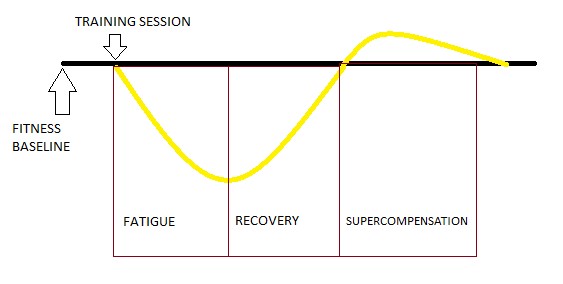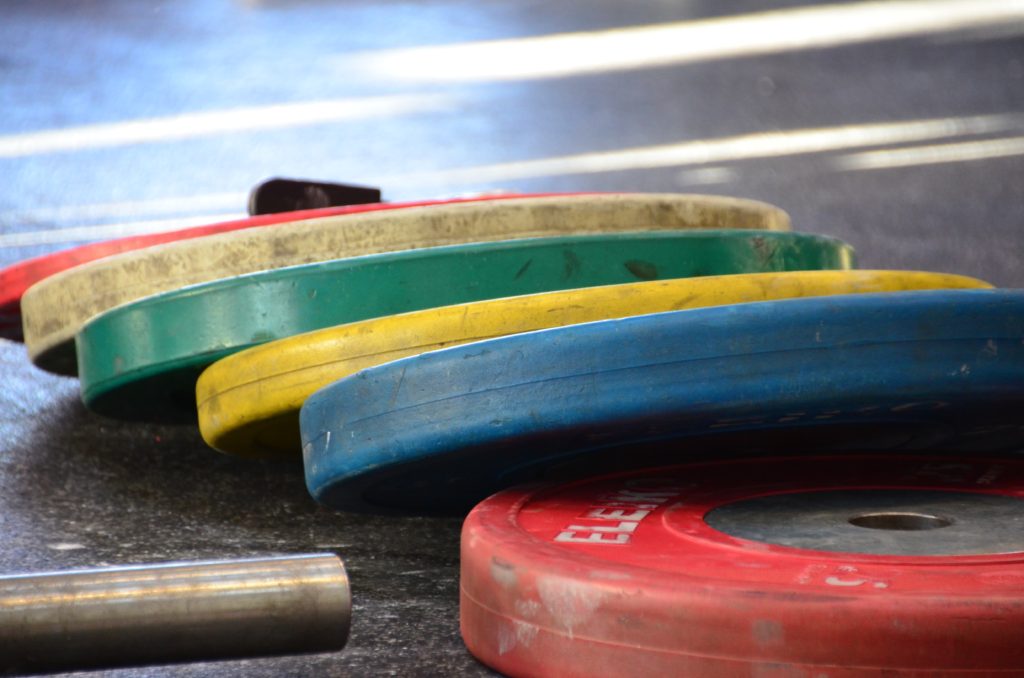How to Deload: Do Less to Gain More Muscle and Strength
Deload week—the not-so-fun part of training that is often undervalued and forgotten.
Although deload weeks aren’t quite as exciting as high-intensity, heavy, all-out training, they’re very beneficial when done right and used correctly.
Table of Contents
- What Is a Deload?
- Why Deload?
- How To Do a Deload Week
- How To Know If You Need a Deload
- How Often Should You Deload?
- How to Eat During a Deload
- Cardio During a Deload
- After a Deload
What Is a Deload Week?
A deload is a short-term reduction in training intensity, volume, or a combination of the two. Deloads typically last one week.
Easing off the intensity means reducing the amount of weight you’re lifting. Decreasing volume means performing less sets and/or reps.
Basically, it’s an easy week of training where you don’t push your limits.
Why Deload?
The constant stress and strain placed on your body during intense, heavy weight training is taxing. Eventually, the fatigue accumulates and a week of taking it easy becomes a necessity. It’s not only beneficial for your body, but your mind as well.
Deloading is a great way to sustain high levels of training intensity over time, avoid or overcome plateaus, and prevent injuries, aches, and pains.
Deloads also keep you feeling fresh and motivated.
This light week of training gives your muscles, ligaments, tendons, joints, and central nervous system a break from the beating they receive multiple times a week, week after week.
If you’ve plateaued and you can’t seem to break through and start progressing again, a deload week may just be what you need.
If your body is feeling run down and your desire to train is nearly gone, a deload week may just be what you need.
A properly executed deload can solve multiple problems at once.
Do less for a week to gain more in the long run.
When you look at how the human body responds to physical stress and recovery, a deload makes a lot more sense and sounds like a great idea.
Here’s how your body deals with stress and recovery from training:
» You lift weights at a high enough level of intensity and volume that places large amounts of stress on the muscles being trained.
» Stress the muscle enough, and micro-tears are created in the muscle fibers. They’re fatigued, and initially after training, there’s a drop-off in performance.
» Remove the stress and let the body recover. Energy and performance return to baseline.
» Then the supercompensation phase. This is where adaptation takes place, and there’s a rebound response where performance increases beyond the baseline level. Increases in strength and muscle mass take place here.
To sum that up, you overload your body and muscles enough that it results in acute fatigue. Remove the stress (training) and let your body recover. You become better at handling that stress. Muscle is built and strength increases — allowing you to be better equipped at handling larger amounts of stress in the future.
This is why recovery is so important. If you disrupt the recovery process, there’s also a good chance you’re also disrupting the process of building muscle and strength.
Here’s a visual representation of how this works:

This is happening after every training session you complete.
This is an ongoing process that your body is constantly going through.
The key is to prioritize recovery and not let the stress from training accumulate to the point where it outpaces your ability to recover.
How To Do a Deload Week
There is no universally perfect way to deload. There are many different ways to do it, and each of them can be effective.
The form of deloading you choose largely depends on your goals, age, training experience, preferences, and how your body feels.
If your body is feeling really worn down, you could decrease both the weight and training volume.
If you’re still feeling good and not too run down, but it’s time for your planned deload, you could only decrease the training volume.
You can even deload on certain exercises, while keeping other exercises within the workout at the same intensity and volume.
Option #1
Use the same weight, or 10% less than normal. Only perform 40 to 50% of your normal volume (sets and reps).
Example:
You’ve been using 315 pounds on barbell back squats for 4 sets of 6 reps during your workouts.
During a deload you could keep the weight the same, or lower it to 285 pounds (10% reduction in weight), and perform 2 sets of 3 reps.
Who is this best for?
In my opinion, this is the best way to deload and it can be effective for anyone, but it’s more commonly used among lifters who are more serious about their training and attaining their goals.
This approach to deloading allows you to still lift fairly heavy weight, which can retain strength and technical proficiency. Lifting heavy weight with spot-on form is a skill that constantly needs work and should be practiced every chance you get.
At the same time, you’re allowing your body to recover since the volume is kept very low and you’re not training to failure. Not training to failure is key here.
Volume, meaning the number of working sets and reps you perform, is more physically demanding and causes more fatigue than the amount of weight you’re lifting.
If you’re new to the concept of deloading, I’d try this method first.
If you come back to the gym refreshed, extra motivated, and your strength is the same or has increased, you’ve had a successful deload week.
If your first week back in the gym doesn’t go well, then give option #2 or 3 a try before trying options #4 and 5.
Option #2
Do your normal number of sets and a few less reps per set, but only use 50 to 60% of the weight you’d normally use for each exercise.
Example:
You’ve been using 315 pounds on barbell back squats for 4 sets of 6 reps during your workouts.
During a deload you’d use about 155 to 190 pounds, and perform 4 sets of 3 or 4 reps.
Who is this best for?
Just like option #1, this too can work great for anyone.
In my opinion, this is your next best option.
It’s not my first choice because the weight you’re using is significantly lower, but we’re all built a bit differently. We all recover and overcome fatigue at different rates.
For some people this will work great. For others, their first week back to normal training and handling heavier weights may feel a bit off due to using much lighter loads.
Option #3
Another option is to reduce the weight and volume (sets and reps). Both by about 50 to 60% of what you’d typically do.
Example:
You’ve been using 315 pounds on barbell back squats for 4 sets of 6 reps during your workouts.
During a deload you’d use 155 to 190 pounds (50 to 60% reduction in weight), and reduce the volume from 4 sets of 6 reps, to 2 sets of 3 reps.
Who is this best for?
Just like options #1 and 2, this is useful for lifters of any experience level.
Everybody has a different body. Some forms of deloading will work better for some people than for others. Reducing both the weight and volume means a much lighter workload, which could be great if you’re feeling wiped out. If you feel like this is what your body needs, then give it a shot.
This is another way of deloading that I’ve tried, and it was successful. I returned to the gym the following week feeling great and stronger than before.
Option #4
This technically wouldn’t even be a deload, but you can also take the entire week off from the weights.
That means no resistance training of any kind. Instead, you might do some light cardio, like walking.
When I was first getting into lifting, this is what I did. No weights, no gym, nothing. I quickly realized that this wasn’t for me. I was always weaker my first day back in the gym, and throughout the rest of the week.
To be fair, back then my training, nutrition, and recovery was not as good as it is now.
Still, I’d only go for this option if you’re going on vacation or a business trip. Getting to a gym isn’t always easy when you’re traveling.
Some people struggle to make it to the gym. For them, making it to the gym is seen as unpleasant, but necessary. It’s a big accomplishment if they show up. If this is you, do not take the entire week off. Stay in the habit, keep the routine, and solidify it. Not going to the gym for an entire week could make showing up the next week a serious challenge.
Who is this best for?
More casual, recreational lifters, and those are who are traveling and access to a gym is difficult.
Option #5
Your last option is to change your form of exercise. Instead of lifting weights, you’d focus on mobility work, more stretching, swimming, low-intensity bodyweight training, or try out a form of cardio you typically don’t do. Make sure the intensity is low. You don’t want to try something new and end up sore.
Who is this best for?
In my opinion, recreational lifters. Those who aren’t necessarily concerned with packing on a bunch of muscle and strength, and don’t have any serious goals or track their progress.
Instead, they go to the gym to remain active, get their heart rate up, get their muscles working, and stay healthy.
How To Know If You Need a Deload
There are two different trains of thought when it comes to deloading.
» Go by feel and listen to your body when it’s giving you signs that a deload is needed.
» Plan deloads into your program in advance, and take the deload week regardless of how you feel. Meaning, even if you feel great and your lifts are going up, take the deload week anyways.
Going by feel makes perfect sense and can work very well. This approach is best for those that are more experienced and have been training for years and years.
Often times, more experienced lifters understand the importance of recovery, they train harder, but also train smarter. They know how to properly structure their training so they’re consistently progressing, but also managing fatigue to avoid burn out, injuries, and allow proper recovery to take place.
They know when to push their limits, and when to pull back.
They have a much higher level of awareness of their body and know how to interpret the signs their body is giving them.
If you’re at this stage, going by feel makes perfect sense. You can spot the signs a deloaded is needed before your body really starts getting beat up, or even worse, injured.
You can plan deloads in advance, but what if your deload week is here and you’ve been crushing it in the gym, progressing every week, and you’re feeling great? I’d rather keep that forward momentum going and keep progressing than take an easy week of training.
For more experienced lifters, I believe going by feel is best.
Telling a beginner to go by feel doesn’t always work well. Beginners and less experienced lifters usually aren’t as aware of the signs their body is giving them. Not only that, but they often disregard them.
Inexperienced lifters are often younger, and also very eager. They want to gain as much muscle and strength as quickly as they can.
So what do they do? They push past the aches and pains, disregard the biofeedback their body is giving them, no rest days, and hard and heavy training 6-7 days a week for months. Not good.
With more inexperienced lifters, it may be a good idea to have planned deloads every 12 weeks. After 12 weeks of intense and consistent training, most people would need a deload anyways.
You can go by feel, even as an inexperienced lifter, but make sure you don’t ignore the signs your body is giving you.
Here are some signs it may be time for a deload week:
✓ Decrease in performance. The weights feel heavier, strength is down, and your endurance isn’t up to par. Workouts that you can usually push through just fine now seem much more challenging.
✓ Persistent aches, pains, and minor nagging injuries.
✓ Lack of motivation to train.
✓ Easily irritable, moodiness, and inability to concentrate. This is due to an increase in your stress hormones — cortisol and epinephrine.
✓ Constantly tired, and an unusually high level of fatigue.
✓ Trouble sleeping, due to an increase in stress hormones that make it difficult to relax, unwind, fall asleep, and stay asleep.
✓ Loss of appetite.
How Often Should You Deload?
Deload frequency will depend on a few things.
» A 45-year will most likely benefit from more frequent deloads than a 25-year old.
» Someone who’s very experienced and has become very strong will likely deload more often than someone who’s 1-3 years into lifting and isn’t quite as strong yet. More experienced and stronger lifters are usually training with more intensity and heavier weights, which can wear you down more.
» Some people can handle much more of a beating than others. Their joints, muscle, tendons, ligaments, and central nervous system can be faced with heavy loads for longer, and not experience the aches and pains most people would experience. Their body can handle more.
As you become more experienced you’ll start to get a better idea of what your body can handle. Most people will do well with a deload every 8 weeks. Beginners and younger lifters can extend that to 10,12, or even 14 weeks. More experienced and older lifters may need more frequent deloads — every 4 to 6 weeks.
With 10 years of training experience and being in my late twenties as I write this, I currently deload about every 8 weeks. As I get older, I’m sure that’ll drop to 6 weeks, and eventually 4.
No matter who you are or how experienced you are, I don’t recommend going over 12-14 weeks without a deload. If you can go that long without feeling a deload is necessary, you probably aren’t training hard enough. Which brings me to my next point. Most people you see in the gym don’t need to deload. They aren’t training hard enough or heavy enough.
If you’re someone who is truly training with a high level of intensity, tracking your workouts and your progress, striving for progressive overload, and you take lifting pretty seriously, a deload can definitely benefit you.
How to Eat During a Deload

If you’re in a calorie deficit, raise calories to maintenance. Deloads are a time for recovery, and more calories will help with that. You could benefit both physically and mentally from having your calories a bit higher for a week. It could be used as a time to have a diet break. Taking a break from being in a deficit could boost your motivation to continue towards your fat loss goals once the deload week is over. Sustainability is key for long-term success, and including diet breaks, like during a deload, can help you achieve your goals in a sustainable and effective way.
If you’re in a calorie surplus, keep the surplus, reduce the size of your surplus, or drop to maintenance. This mainly comes down to personal preference and how concerned you are with keeping body fat gains to a minimum. But definitely do not drop to a deficit just because you aren’t training for 7 days. Remember, deloads are a time for recovery, so have calories at least at maintenance.
Cardio During a Deload

The goal of the deload is to give your body and mind a break from any exhaustive, high-intensity exercise that will wear down your muscles, joints, ligaments, tendons, and central nervous system.
You want to let the cumulative fatigue and stress from training dissipate so you can return to the gym feeling refreshed.
Cardio is great and can benefit everyone.
If you’re going to do cardio, make sure you keep the intensity low and choose low-impact activities.
Walk outside, go for a light swim, or a light bike ride.
After a Deload
There are two different ways to approach the week after a deload.
Some people prefer to pick up where they left off. They jump right back into training with heavy weights, more volume, and high-intensity.
Others prefer to ease back into training to avoid being excessively sore. That first week back in the gym they use weights, volume, and a level of intensity that’s higher than the deload, but not quite back to normal.
Neither one of these is right or wrong. This also comes down to the individual — training experience, age, and what their body can handle.
If you only reduced the volume or weight during your deload, you can probably get away with jumping right back into heavy training with more volume and intensity.
If you reduced both the weight and volume or took the week off from training, easing back into training may be a good idea to avoid being overly sore all week, which could impact your training.
If you’re going to ease back into training, work at 75-80% this first week back, then the following week go back to normal, all-out, hard training.
How Will You Incorporate Deloads Into Your Training?
Deloads aren’t fun, but if you’re truly training hard on a regular basis, they’re necessary. Deloads allow you to consistently train at a very high level of intensity, without facing unwelcomed aches, pains, and injuries. This can improve your progress over the long-term and avoid burn out.
So, over to you now. How will you utilize deloads? Will you take one every 6 weeks? Every 8? Will you decrease volume, or both weight and volume? Give it a shot and find what works best for you. A successful deload will have you back in the gym feeling better than before and extra motivated.
Any questions? Want to share your experience with deloads? Leave a comment below or shoot me an email or message on Instagram. I’d love to hear from you.
If you’re feeling uncertain about your training and could use some guidance, you can apply for coaching HERE.

